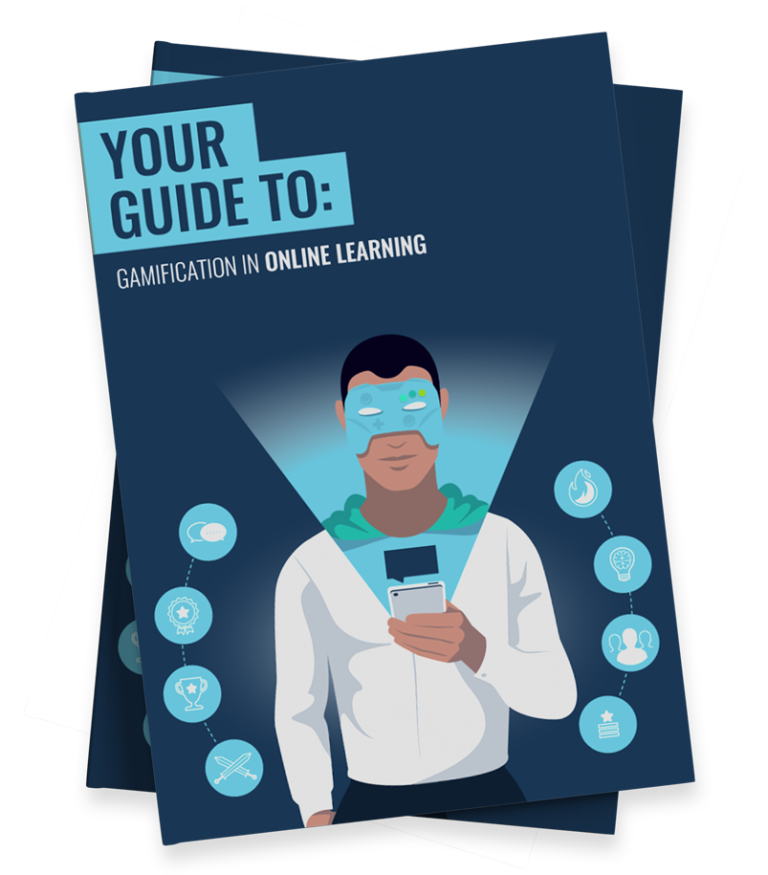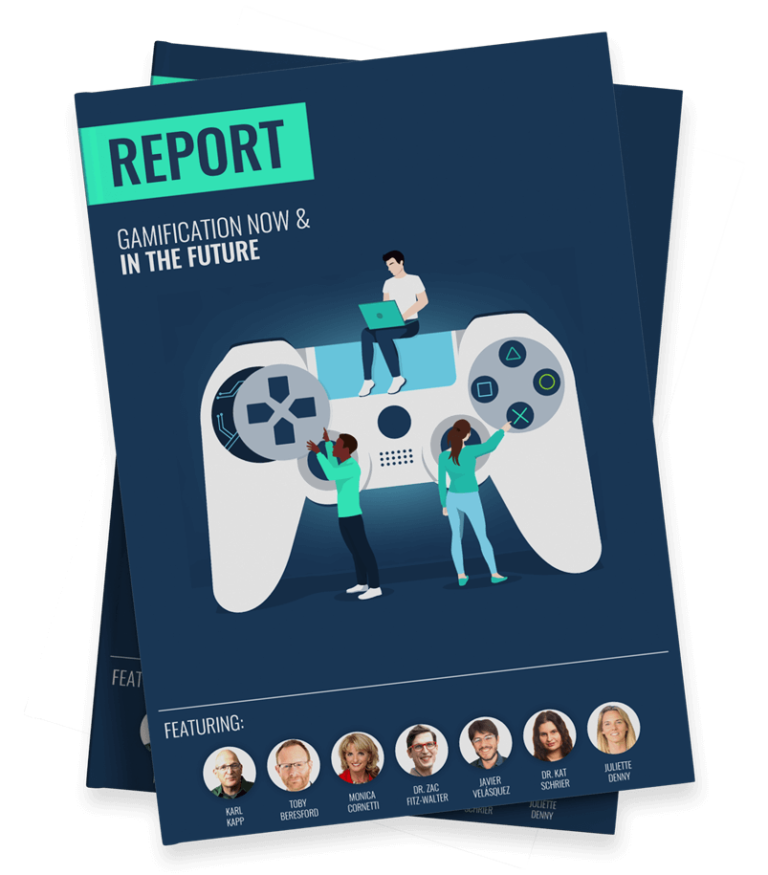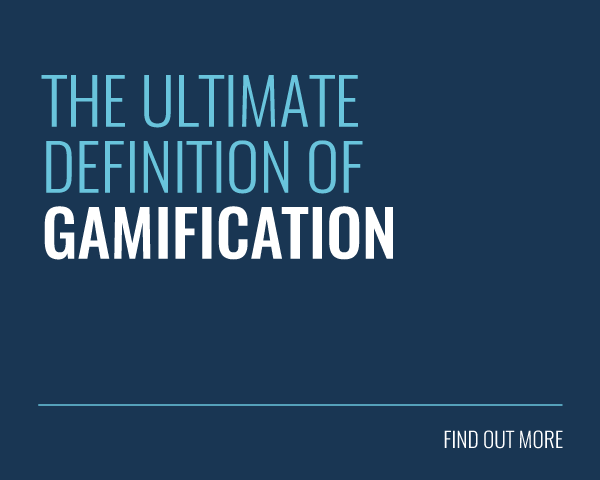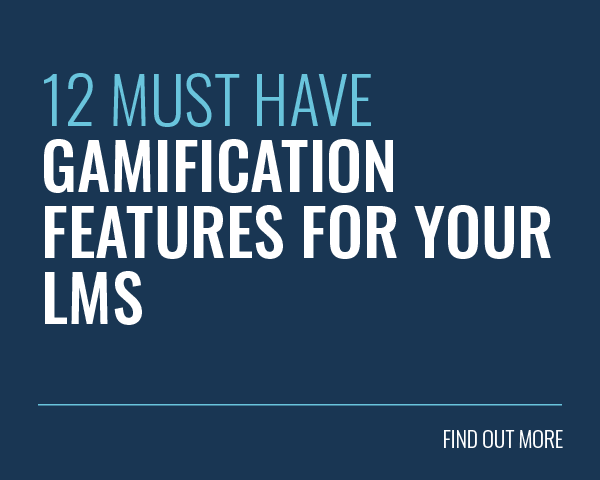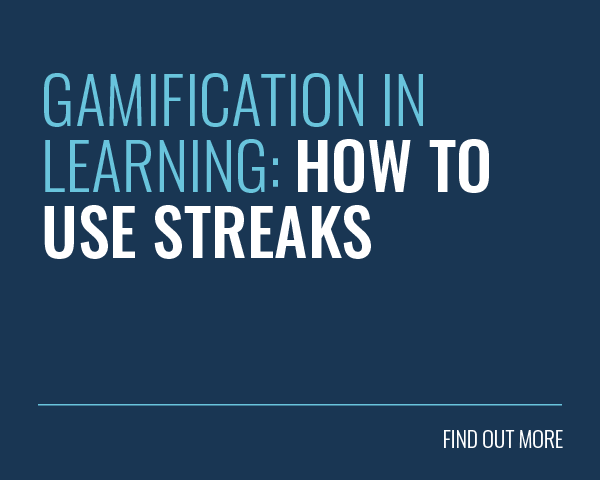
Gamification has a long and storied history.
Since gamification has been recognised as a powerful engagement tool, it has almost become a standard feature of software design.
Given its ubiquity, it’s easy to forget that, before 2003, nobody had even uttered (much less heard) the word ‘gamification’.
We’re going to retrace the steps of those who saw the potential of games and game mechanics to engage users.
So step aboard our nostalgia mobile and join us on a trip back in time while we discover the roots of the revolution!
The History of Gamification: The 1900s
1908 – The Boy Scout movement is founded
The Boy Scouts awarded members with badges to recognise their achievements. Scouts could earn badges for becoming proficient in an activity, acting according to the principles of the organisation and for attending special events.
1973 – The power of games to engage employees is recognised.
Released in 1973, The Game of Work was written by Charles A Coonradt to address the issue of flagging productivity in the US. Noticing that productivity was failing as sales of recreation and sports equipment was rising, Coonradt suggested that fun-and-games might be the answer to the thorny problem of employee engagement.
1978 – The Birth of Social Video Games
Roy Trubshaw and Richard Bartle develop MUD1, the first Multi-user Dungeon game. Though its text-based interface was unimpressive by today’s standards, it lit the fuse for the explosion of social online gaming.
1981 – Gamification takes to the skies

American Airlines releases AAdvantage, the world’s first frequent flier programme. The initiative sought to encourage customer loyalty by offering rewards for frequent patronage — a model we still see today in every high-street coffee shop.
1982 – Academics recognise the potential of gaming
With computer games demonstrating inherent abilities to engage users, articles start to appear exploring possible uses. In 1981, Thomas W. Malone released Toward a Theory of Intrinsically Motivating Instruction and Heuristics for Designing Enjoyable User Interfaces, two articles which outlined what could be learned from computer games and applied to other areas.
1996 – Game players are categorised
Richard Bartle (MUD1 developer) defines 4 gamer types based on how different people approach playing a game. This model would go on to become a cornerstone of many gamification initiatives.
1999 – Fun is taken seriously
More and more people start to recognise the power of ‘fun’. Furthermore, Stephen W. Draper releases a paper suggesting that user enjoyment should be a major requirement of all software design.
The History of Gamification: The 2000s
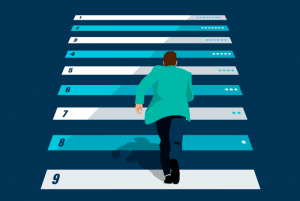
In the years leading up to the end of the millennium, the power of game mechanics was slowly gaining recognition. As 1999 drew to a close and everyone was singing Prince songs, nobody could have suspected the cultural sensation that gamification was about to become…
During the latter part of the 20th Century, people were beginning to consider games as a way to increase productivity in the workplace. With the conception of Frequent Flier rewards, the power of game mechanics to engage customers was also realised.
We had our successes and we had an inkling of a truly effective model for engagement — the only thing we were missing was a name…
2002 – ‘Gamification’ is born
While designing a game-like user interface for commercial electronic devices (ATMs, vending machines, mobile phones) Nick Pelling coins the ‘deliberately ugly’ word, gamification. With a name in place, the history of gamification truly begins.
Also this Year:
- America’s Army is released. This was an educational first-person shooter game. It was dubbed by the U.S. Army to be a “cost-effective recruitment tool”.
- The Serious Gaming Initiative (a project of the Woodrow Wilson International Center for Scholars) is founded.
2005 – The First Modern Gamification Platform
Rajat Paharia founded Bunchball, a platform designed to boost engagement on websites by adding a layer of game mechanics. It would be another 3 years before they adopt the term ‘gamification’.
Also this year:
- Microsoft’s Xbox 360 Gamerscore system is introduced, standardising in-game achievements.
2007 – Gamification in the home
This year, Kevan Davis develops Chore Wars. The site is designed to incentivise the act of doing chores by turning it into a game. With its fantasy role-playing game theme, Chore Wars finds favour with parents, children and even fastidious flatmates!
Also this year:
- 40,000 people generate more than 1 million page views on Dunder Mifflin Affinity, a site developed by Bunchball for NBC to promote The Office.
2008 – Gamification goes on record
In a blog article covering his time at the 2008 Social Gaming Summit, Bret Terrill is documented as using the term ‘gamification’ for the first time:
“In conversations, one of the biggest topics … is the gamification of the web. The basic idea is taking game mechanics and applying to other web properties to increase engagement.”
Also this year:
- Sony begins offering Trophies for the PlayStation 3.
2009 – Gamification All Over The Place
2009 saw the launch of Foursquare, an app allowing users to search for and discover new places. Aside from being a social tool, foursquare also lets users collect badges and other achievements.
For example, by checking into the same place more than anyone else within a 60 day period, the user could become the ‘Mayor’ of that location.
Also this year:
- Gamification platform, BigDoor, is founded and starts providing gamified customer-loyalty solutions.
The History of Gamification: The 2010s
By 2010, gamification was getting the recognition it deserved. But things were about to get really interesting. As gamification starts to go stratospheric, Growth Engineering is locked in a fight-to-the-death against dull online learning. As the mission to make learning fun continues, gamification looks like a promising addition to their arsenal…
2010 – Gamification changes the world
Jane McGonigal delivers her groundbreaking TED Talk, Gaming Can Make a Better World, in which she prophesies a game-based paradise:
“When I look forward to the next decade, I know two things for sure: that we can make any future we can imagine, and we can play any games we want, so I say: Let the world-changing games begin.”
This talk could well be the defining moment in the history of gamification.
Also this Year:
- At the 2010 DICE Conference, Jesse Schell predicts that gamification will end up everywhere, from your toothbrush to your tax returns.
- Gabe Zichermann releases ‘Game-Based Marketing: Inspire Customer Loyalty’ examining how game mechanics can be used to engage customers.
- As the term ‘gamification’ gains traction, it’s adopted by Bunchball and Badgeville to describe their services.
2011 – Gamification Explodes
Gamification Co. host the inaugural Gsummit in San Francisco attracting around 400 attendees (a number that would double by 2014). Jane McGonigal’s game-changer, Reality is Broken is officially released at the summit.
A workshop entitled “Gamification: Using Game Design Elements in Non-Gaming Contexts“ is held at the CHI (Computer-Human Interaction) 2011 conference, spawning the Gamification Research Network.
Also this year:
- Are You A Human releases PlayThru, gamified human verification.
- Apple adds achievements to Game Center with the release of the iOS 5.
- Fitbit releases their Fitbit activity tracker app.
2012 – More hype for gamification
After adding gamification to its Hype Cycle in 2010, Technology research firm, Gartner predicts that by 2014, “70% of Global 2000 organizations will have at least one gamified application “.
Also this year:
- Confidence in gamification is shown when Badgeville gets $25 million in funding.
- Amazon releases GameCircle service to track achievements and leaderboards.
- Mozilla Open Badges is launched to create an online standard for recognising learning achievement.
- Naomi Alderman releases Zombies, Run!, a fitness app that turns a run in the park into a chilling zombie-escape game.
2013 – More Gamification Research
Gamification 2013 is held at the University of Waterloo Stratford Campus. This conference brings together research in a variety of fields from not-for-profit to customer engagement.
Seminars and presentations throughout the conference examine ways to better use game mechanics and look to a future where gamification is applied to almost every industry.
Also this Year:
- Gabe Zichermann’s talk, “The Gamification Revolution: How to Use Engagement as a Winning Strategy from Top to Bottom” is voted the #1 presentation at GSummit 2013.
- Amazon upgrades its FreeTime parental guidance system on Kindle devices. This lets parents reward their children for reaching educational goals.
2014 – Gamification is Dead?!
With a large percentage of gamification initiatives not having the desired impact, a slew of articles like this one appear declaring the end of gamification as a business strategy.
However, further examination of the phenomenon shows that these initiatives failed because their implementation was not tied to a clear business goal. Gamification begins to be seen, not as a miracle cure to poor engagement, but as tool to combat it.
“We found that gamification is indeed very useful to engage audiences, but it’s not necessarily the thing that drives the actual conversion and the actual revenue.” – Petar Karafezov, Senior Manager EMEA, Adobe
Also this year:
- Live World Finals of the Loyalty Gamification World Championship are held online.
2015 – Gamification and Millennials
Gallup research is released showing alarming trends in employee engagement. The research finds that only 31% of employees are engaged with their work, and that millennials are the least engaged group (28.9%).
HR departments of major companies launch gamification trials to address the engagement issue.
Also this year:
- Google Play Games app is updated to let users record and share video from supported mobile games.
2016 – Gamification Goes Viral (and No One Realises)
Pokémon Go is one of the most successful applications of gamification with over 800 million downloads. People who would normally turn their nose up at badge collection were out patrolling the streets searching for rare Pokémon!
As a result, Pokémon Go is one of the most successful apps of all time. It even broke records:
- Highest-grossing app mobile game in its first month
- Most downloads in its first month for a mobile game
- Most international charts topped simultaneously
- Fastest time to gross 100 million
And did you know, experts agree that Pokémon Go’s success was driven in large part by the addictive nature of game mechanics?
Also this year:
- Snapchat release Streaks, introducing the world to a whole new gamification feature!
- As part of its AlphaGo project, Google DeepMind designs an artificial intelligence to become an expert gamer. Lee Sodol, the world champion of Go, a Chinese board game, concedes defeat to the computer in March. In order to win, AlphaGo needed to adapt its strategy on-the-fly with every move that Sodol made.
2017 – Gamification Advocates Meet Up
This was the year that Gamification Europe arrived on the scene. For the first time, hundreds of passionate gamification advocates were coming together to share ideas and strategies.
Furthermore, the World Government Summit put together a strategy for applying gamification in education. These two events mark the beginnings of game mechanics being applied more broadly. As a result, 2017 could be seen as the year that gamification goes from being a novel concept to a tool that designers across the world are using, without even realising it.
2018 – Gamification Everywhere
By 2018, nearly all apps include gamification in some way. Gamification is no longer just found on language learning and exercise apps, but meditation, to-do lists, job applications, litter picking, wildlife spotting, tea collecting… you name it — there’s a gamified app for it.
It’s much harder to spot gamification these days. Not because there’s less of it – but because there’s just so darn much of it. In fact, gamification is everywhere.
What’s even more intriguing is it’s now got lots of different names, from behavioural design to engagement-focused experience.
Here’s our very own Juliette talking about the difference between gamification and game-based learning:
Where Are We Now?
It’s been a wild ride, that’s for sure. In some sense, gamification taps into the very core of human nature. Helping people in their lifelong quest for recognition, encouragement or adventure.
Our timeline started with the scouts – but it’s always been here. The military has been giving out medals and using a levels structure for hundreds of years before the first scout sewed a badge on his sleeve.
If you could hop into a time machine and roll the date back to 700 BC you’d almost certainly find Ancient Greek athletes rising up league tables and philosophers scoring points against each other.
But what if you could roll the dial on the time machine forward?
The future of gamification is of course, shrouded in mystery. Yet — the Growth Engineering Report into the future of gamification asks seven experts what they believe the future of gamification has in store It’s packed full of exciting ideas. Click here to read the report for yourself!

